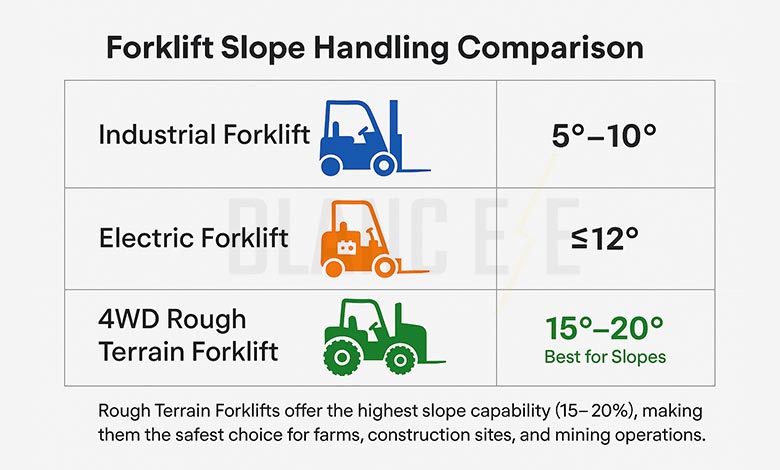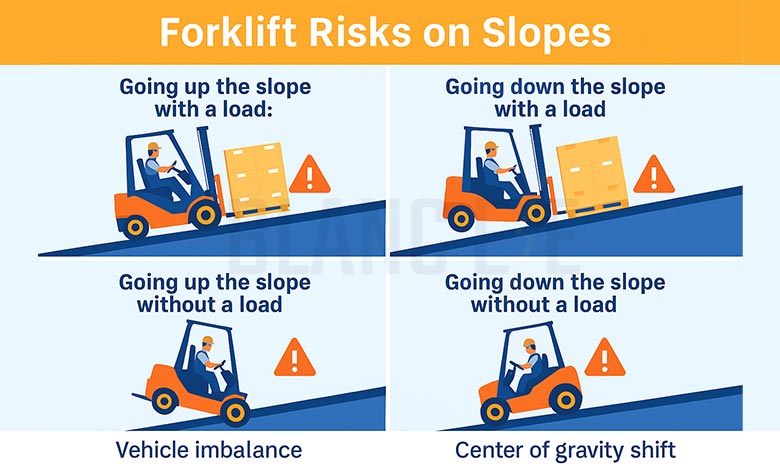Forklifts often skid or roll back on slopes, creating safety and efficiency concerns. Different forklift types have very different slope capabilities. Knowing these limits helps businesses and farm owners choose the right equipment.
Why Are Slope Limits So Important?
Slopes determine not just whether a forklift can move, but also overall safety. Beyond safe limits, forklifts may lose traction, roll back, skid, or tip over. Slope limits also impact efficiency and equipment lifespan.
What Slope Can Different Forklifts Handle?
The most common question is: What slope can a forklift handle?
- Suitable only for flat ground; slopes beyond 10° risk rollback or bottoming out.
- Limited by motor power and batteries; efficiency drops under heavy load or slippery surfaces.
- With high ground clearance, wide wheelbase, 4WD torque distribution, and deep-tread off-road tires, they stay stable on slopes of 15°–20°, even in mud.
Summary: Standard forklifts ≤12°, while Rough Terrain Forklifts handle up to 20°, making them the safest slope option.

Key Risk Factors in Slope Operations
Slope capacity depends on design but also environment and operation:4WD forklifts are designed with stronger drive systems and stability to handle slopes safely.
- Full loads reduce slope performance.
- Muddy or wet ground reduces traction.uce slope performance.
- Sharp turns or sudden braking increase rollover risks.
Even 4WD forklifts require careful operation when these risks combine.

Industry Applications on Slopes
Agriculture
In orchards and farms with slopes, standard forklifts fail, while Rough Terrain Forklifts safely handle hay and silage.
Construction
On hilly construction sites, standard forklifts slip, while 4WD rough terrain forklifts carry bricks and materials steadily.
Mining & Forestry
With rugged slopes, Rough Terrain Forklifts are the most reliable long-term solution.
Safety Tips for Forklifts on Slopes
- Drive slowly
- Keep loads low
- Avoid sharp turns or braking
- Inspect tires and brakes regularly
Even with Rough Terrain Forklifts, safe operation habits are essential.
FAQs
Q1: Can a forklift go up a hill?
Yes, but only within safe slope limits. Standard ≤10°, Rough Terrain Forklifts up to 20°.
Q2: What is the maximum slope for a forklift?
Standard: 5°–10°, Electric: ≤12°, Rough Terrain Forklifts: 15°–20°.
Q3: Are rough terrain forklifts better for slopes?
Yes. With 4WD, off-road tires, and high clearance, Rough Terrain Forklifts are the safest for slope work.
Q4: What safety precautions should be taken on slopes?
Drive slowly, keep loads low, avoid sharp maneuvers, and maintain equipment regularly.
Standard forklifts have limited slope performance, while Rough Terrain Forklifts handle 15°–20° slopes safely. For farms, construction sites, and mining operations, they are the best choice on challenging terrain.
